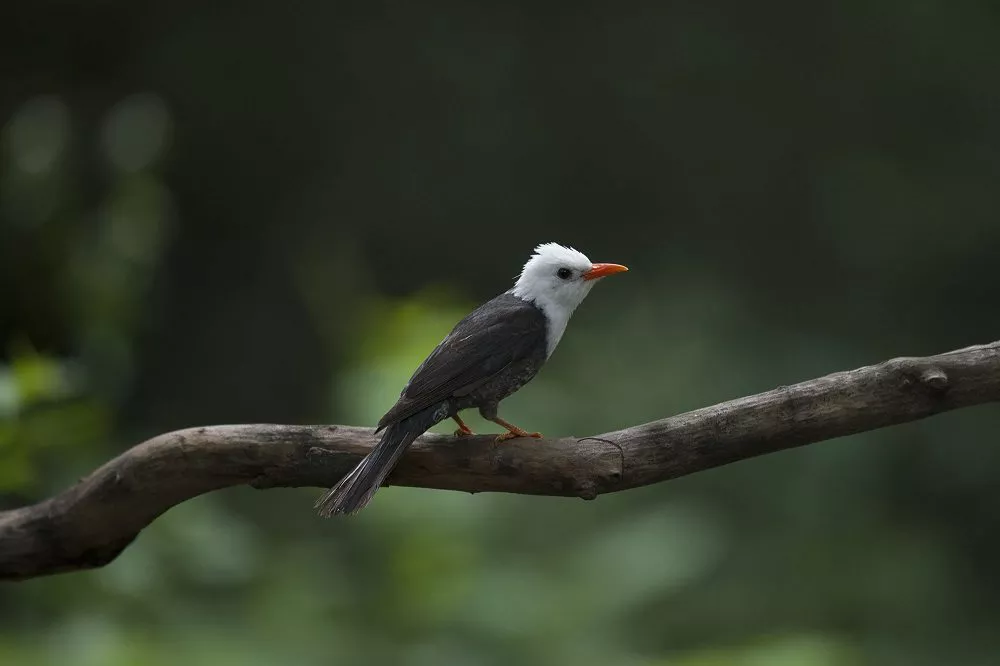The White-headed Bulbul (Pycnonotus xanthopygos) is a small songbird that belongs to the bulbul family. It is also known as the White-throated Bulbul, due to its white throat patch. This bird species is widely distributed across Southeast Asia, from Myanmar and Thailand to Malaysia and Indonesia.
- Appearance:
The White-headed Bulbul is a small bird, measuring about 17cm in length and weighing around 20 grams. It has a distinctive white head, with a black mask that extends from the forehead to the eyes. The upperparts of the bird are dark green, while the underparts are yellow. The wings and tail are also dark green, with white tips on the outer tail feathers. The eyes are dark brown, and the bill and legs are black.
- Habitat and Distribution:
White-headed Bulbuls are found in a variety of habitats, including forests, secondary growth, gardens, and parks. They are commonly found at elevations of up to 1500 meters, but can occasionally be found at higher elevations. They are widespread across Southeast Asia, from Myanmar and Thailand to Malaysia and Indonesia.
- Diet:
White-headed Bulbuls are primarily frugivorous, feeding on a variety of fruits, berries, and figs. They also consume insects and spiders, especially during the breeding season, when protein is needed for the development of young chicks.
- Behavior:
White-headed Bulbuls are highly social birds that are often found in small flocks of 2-10 birds. They are active and vocal birds, with a variety of calls and songs. Their calls are typically high-pitched and melodious, consisting of whistles, trills, and warbles. They are also known for their acrobatic skills, frequently flitting and hopping among the branches and foliage of trees.
- Breeding:
White-headed Bulbuls breed from January to August, with peak breeding activity occurring in May and June. The nest is a small cup-shaped structure made of grass, twigs, and leaves, and is usually located in the fork of a tree or shrub. The female lays 2-3 eggs, which are incubated for about 13 days. Both parents help to feed and care for the young chicks, which fledge after about 13-14 days.
- Conservation Status:
The White-headed Bulbul is a common bird throughout its range, and is not considered to be globally threatened. However, like many bird species, it is susceptible to habitat loss and fragmentation due to deforestation and urbanization. Additionally, the trade of wild-caught birds as pets is a potential threat in some areas.
In conclusion, the White-headed Bulbul is a charming bird with a distinctive appearance and behavior. It is a common sight in many Southeast Asian habitats, and its melodious songs and acrobatic skills make it a favorite among birdwatchers and nature enthusiasts.


 Facebook
Facebook  Instagram
Instagram  Youtube
Youtube 